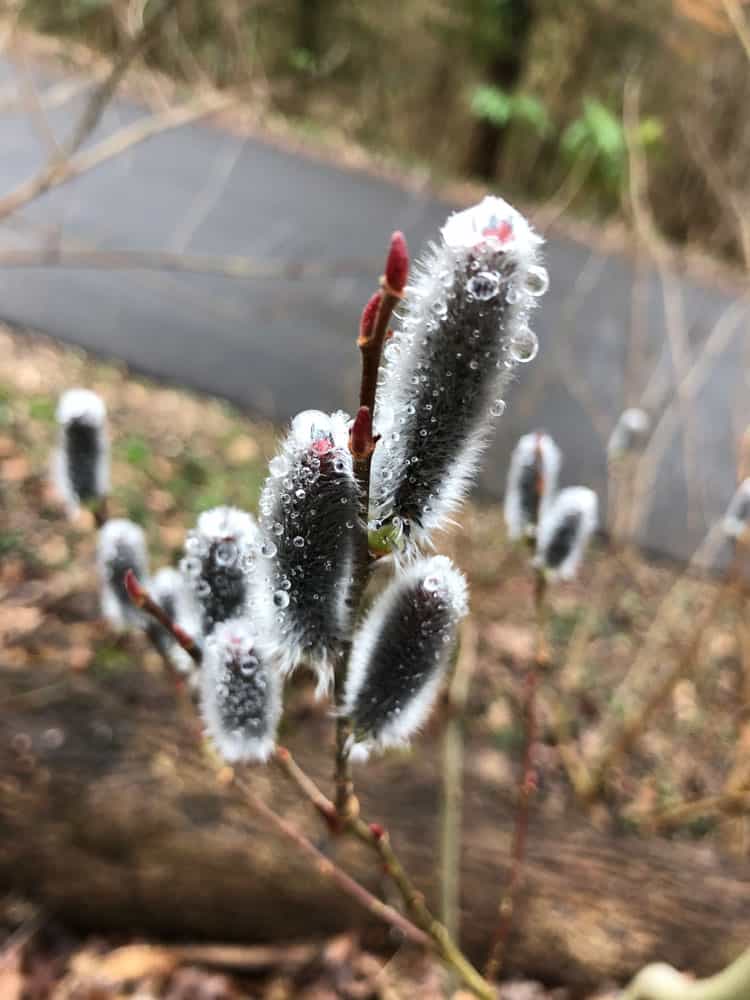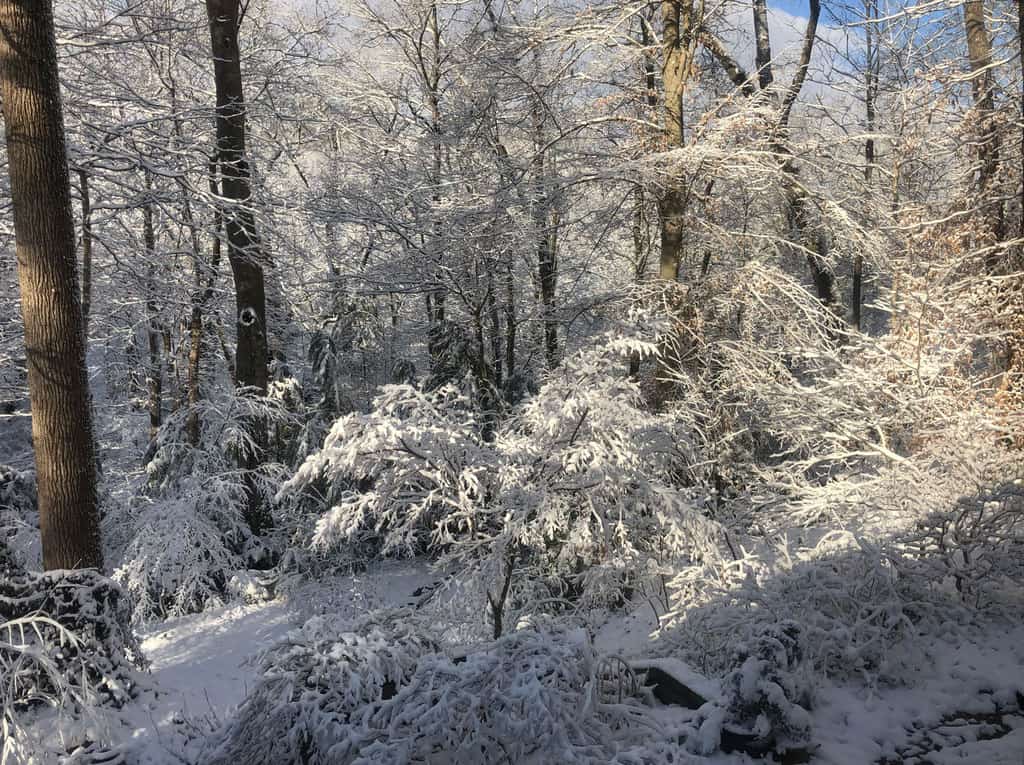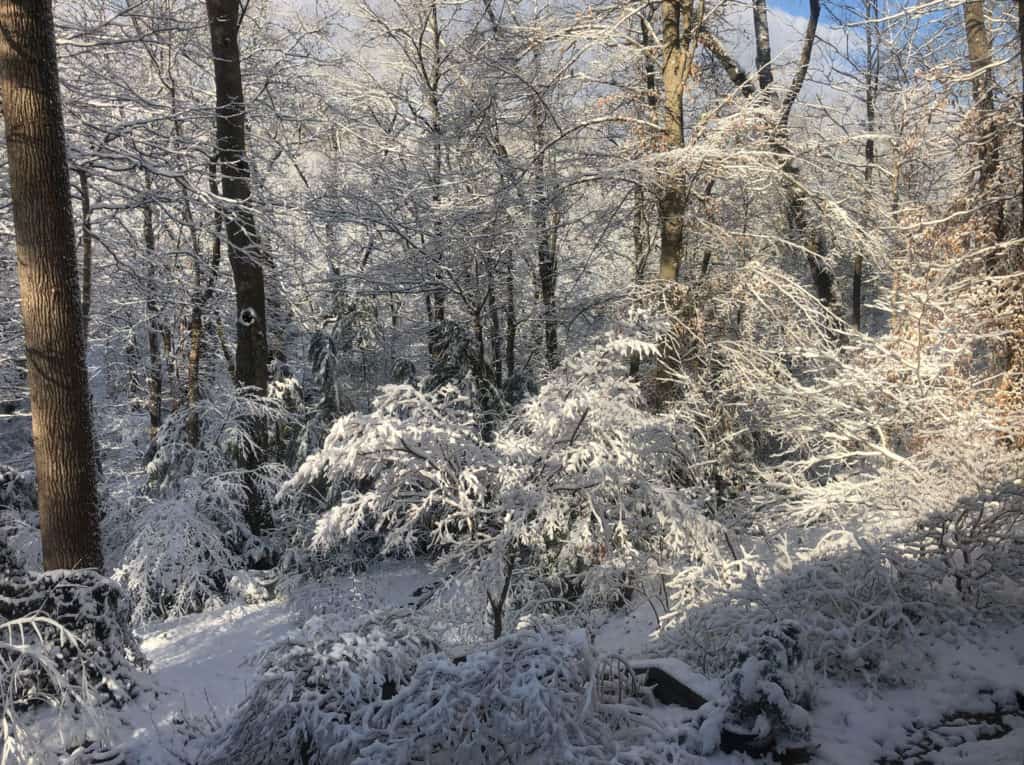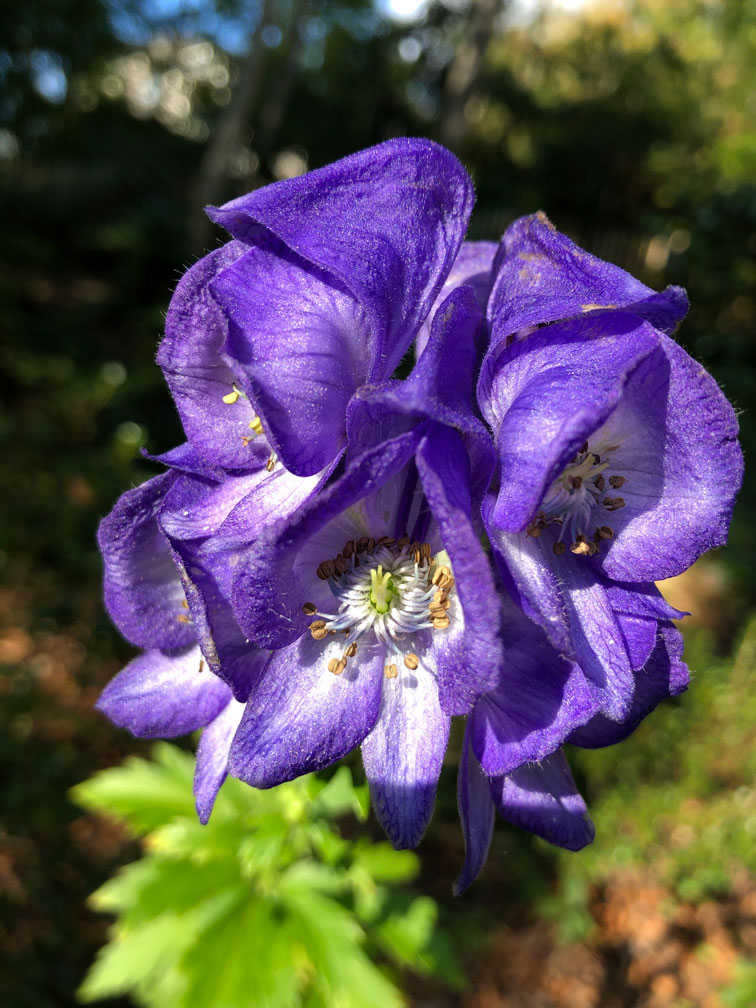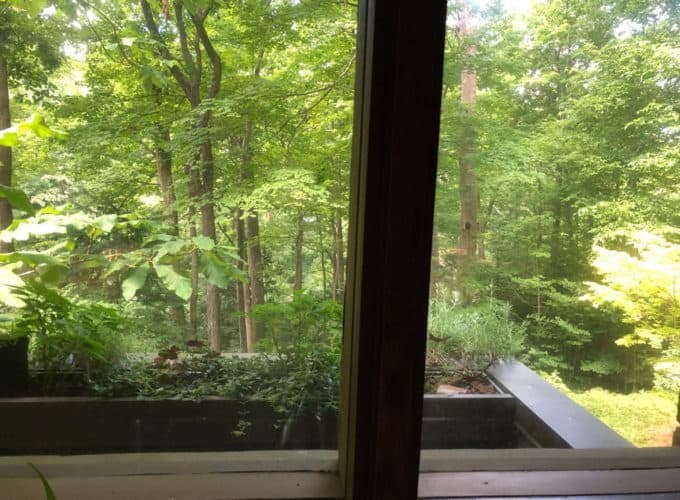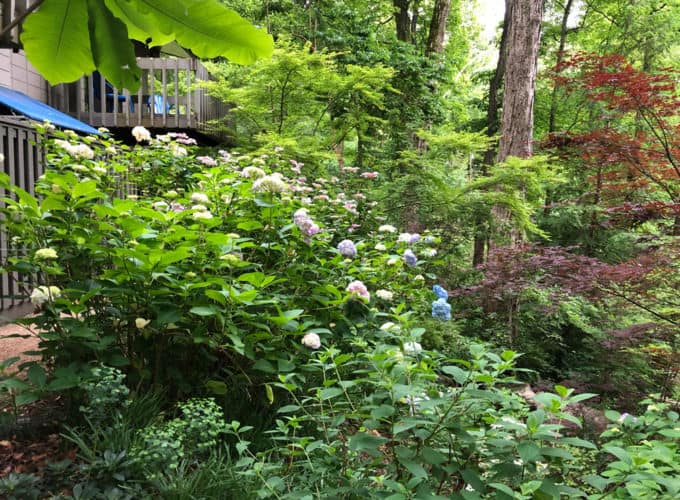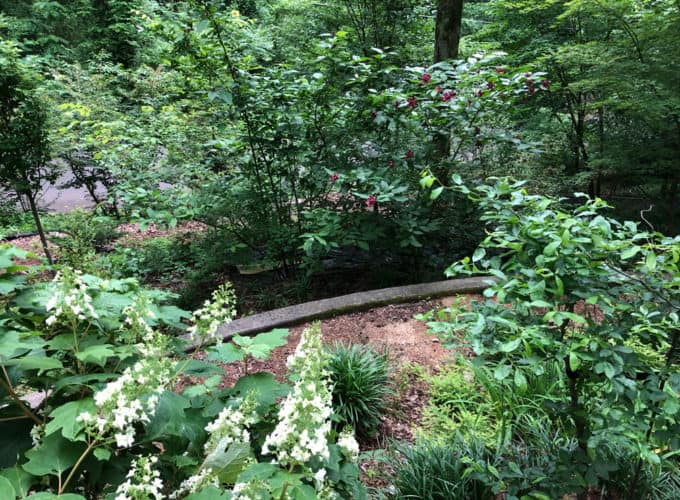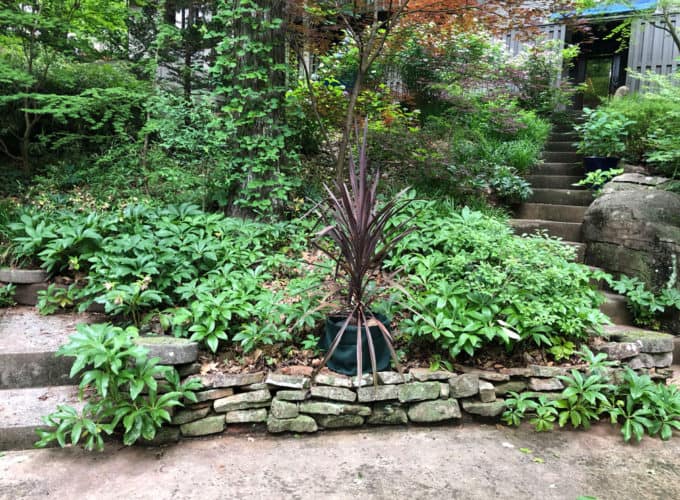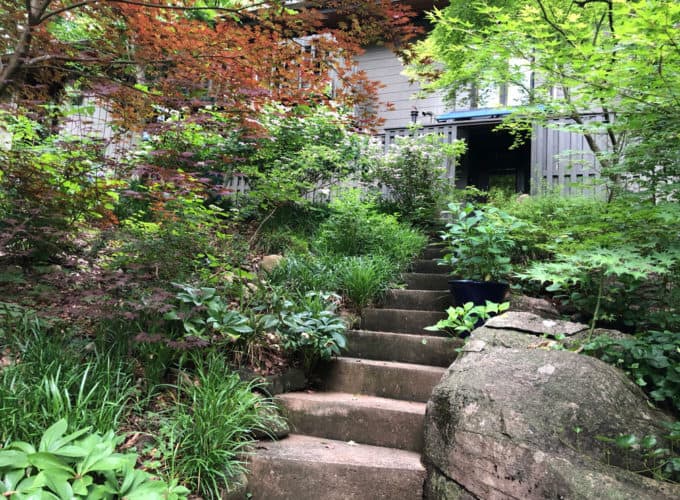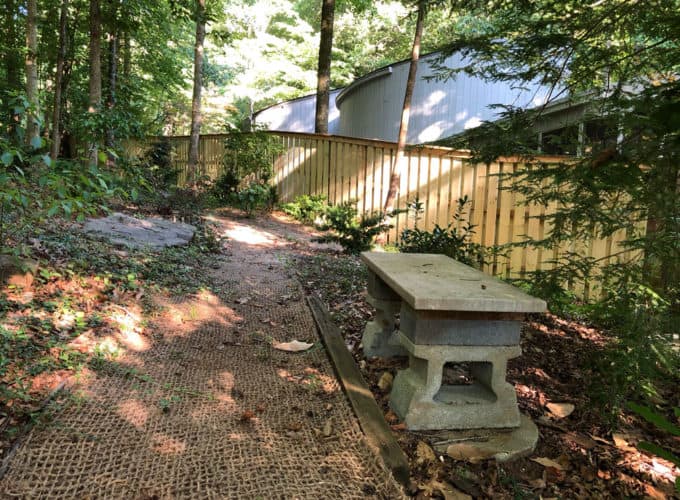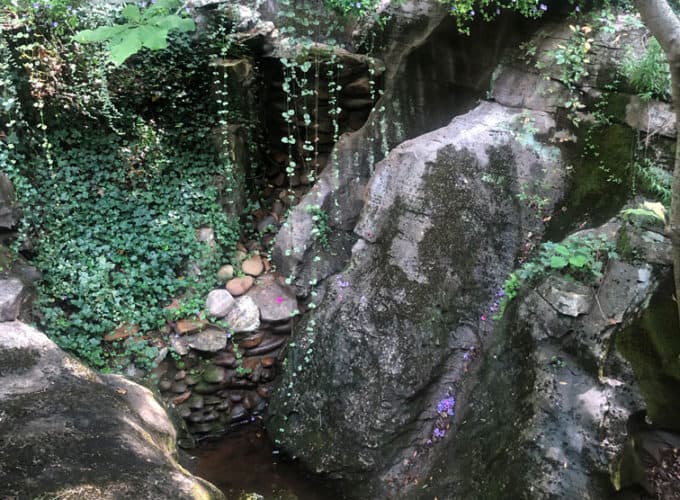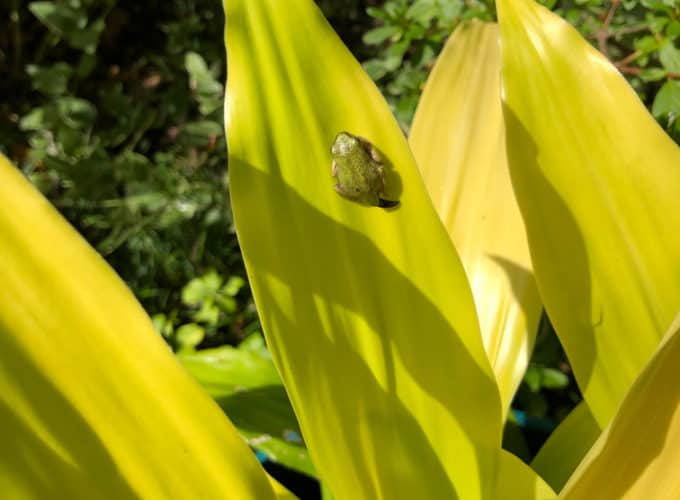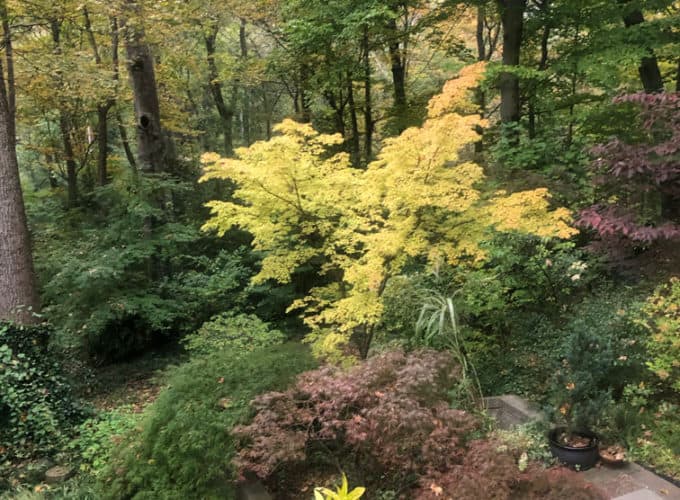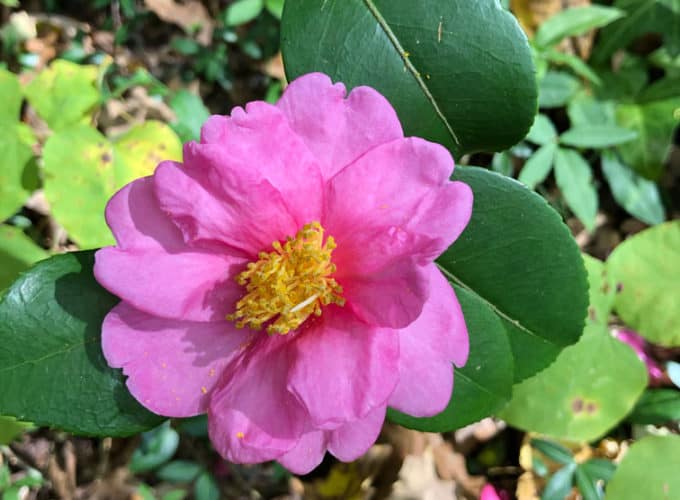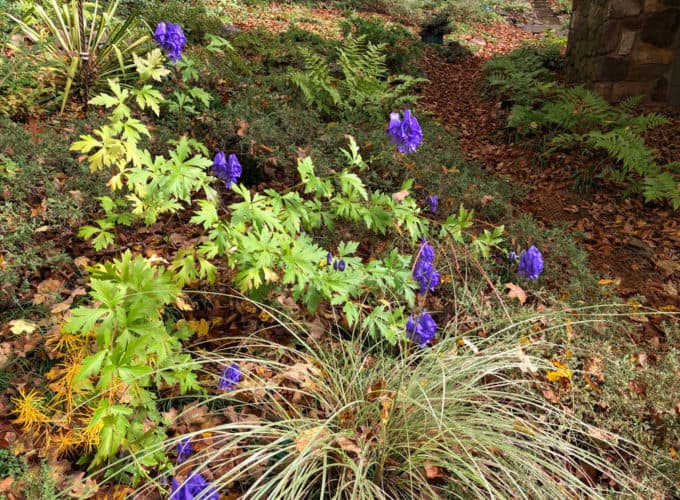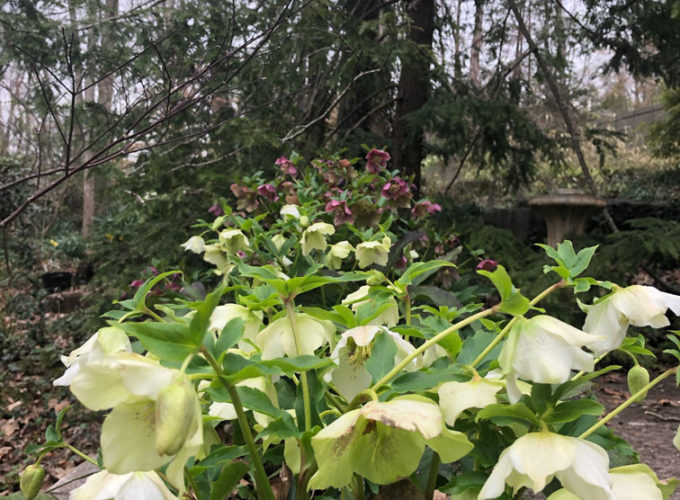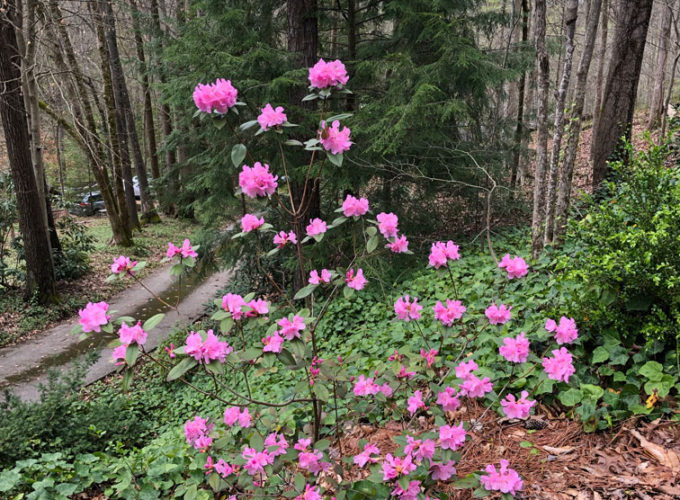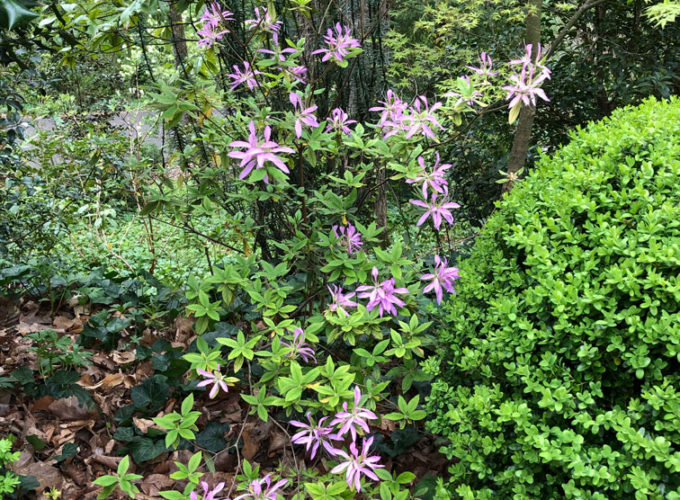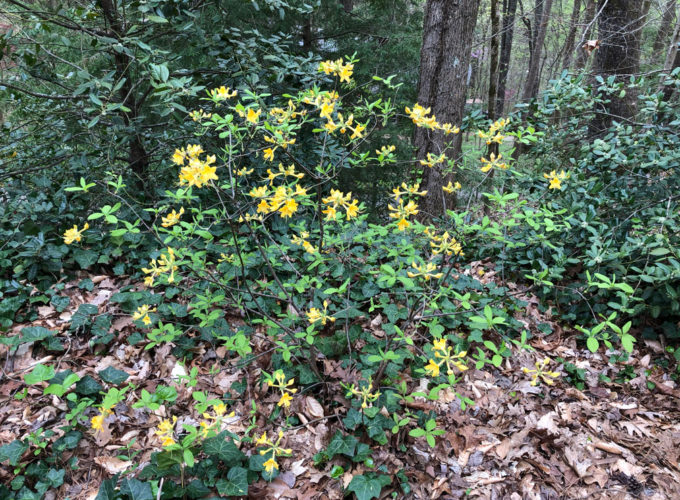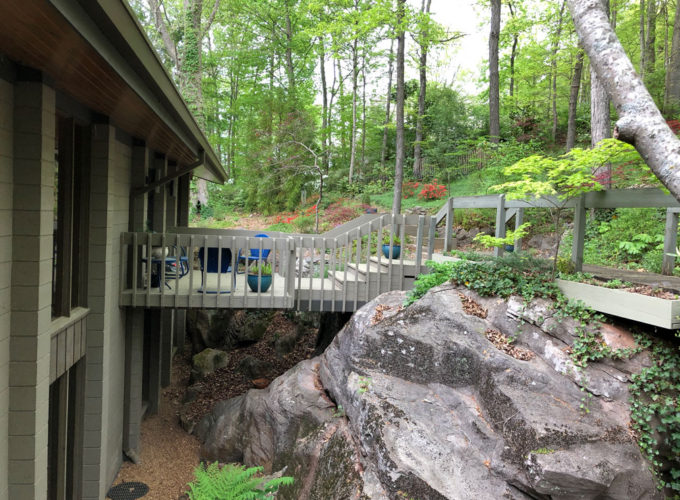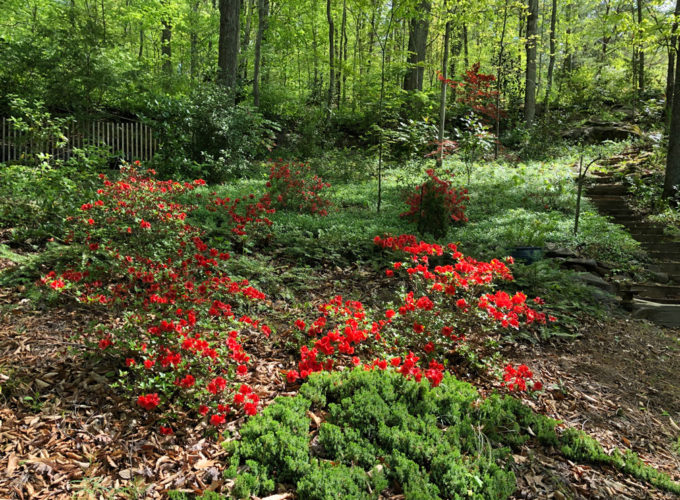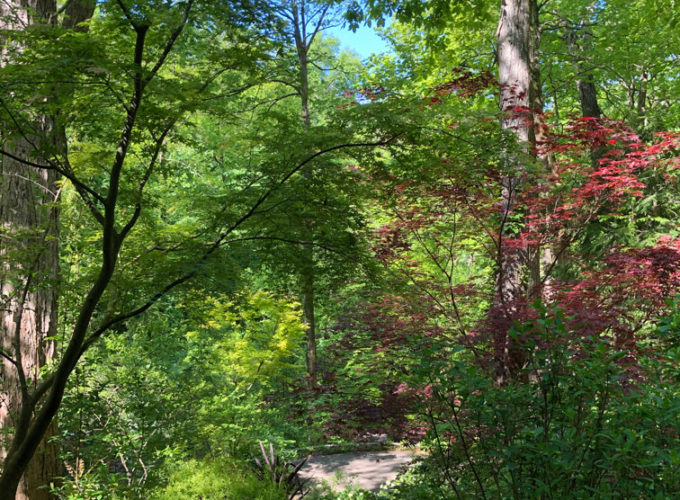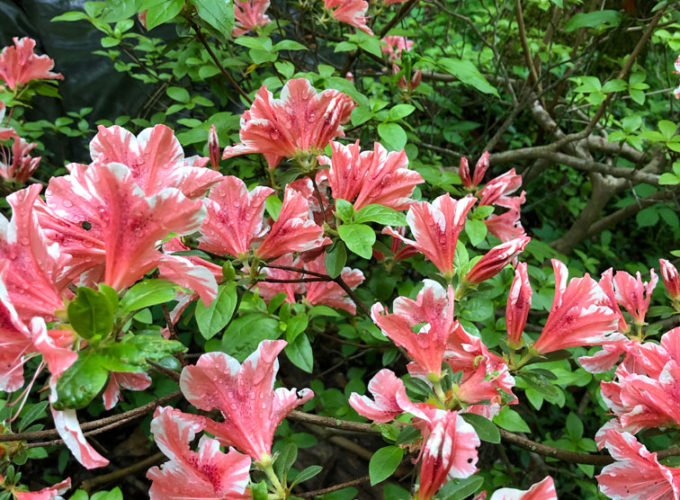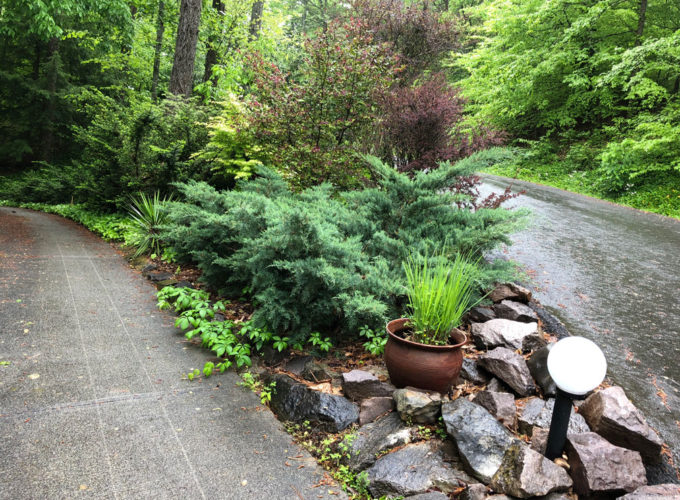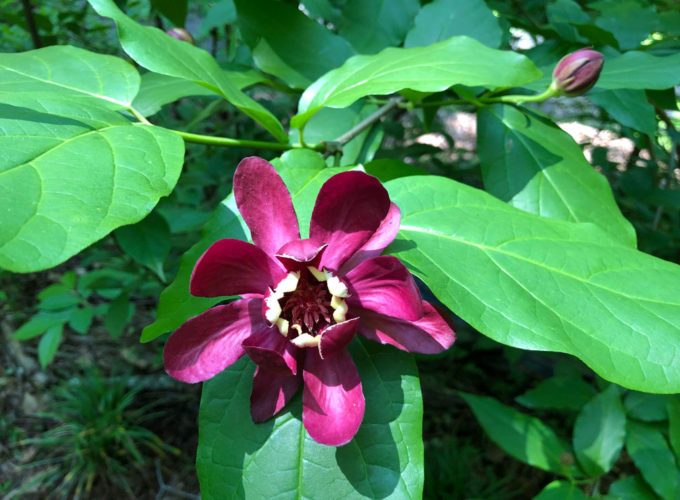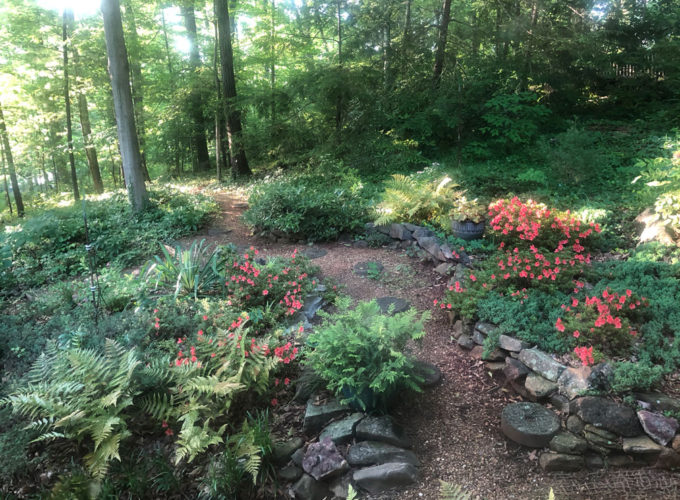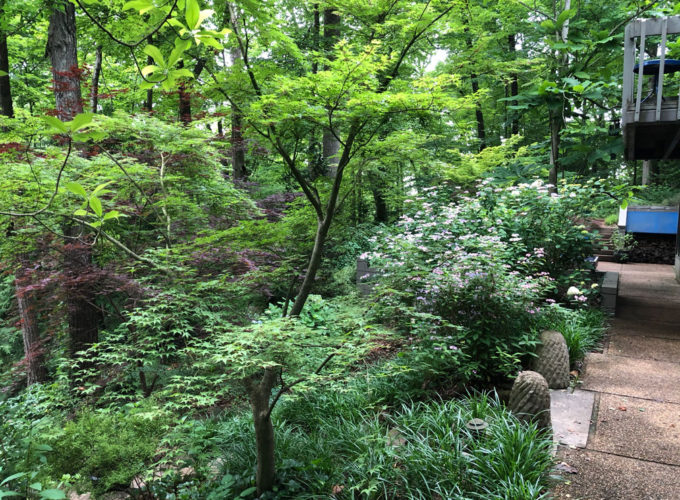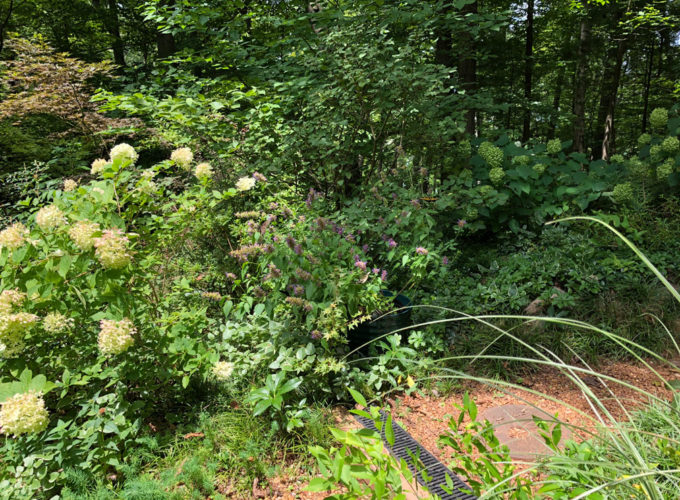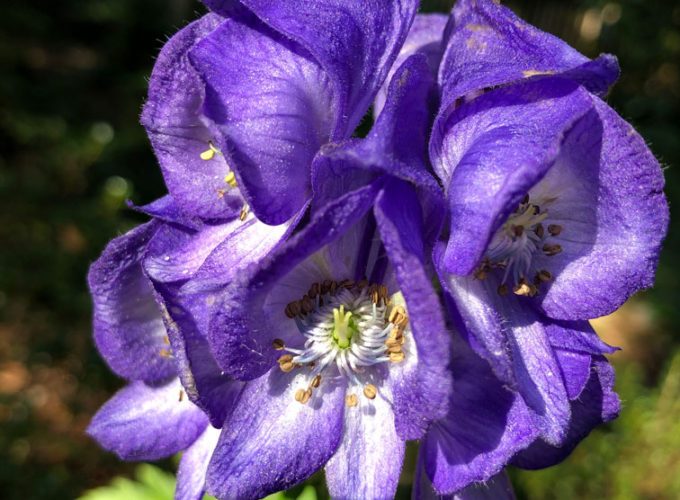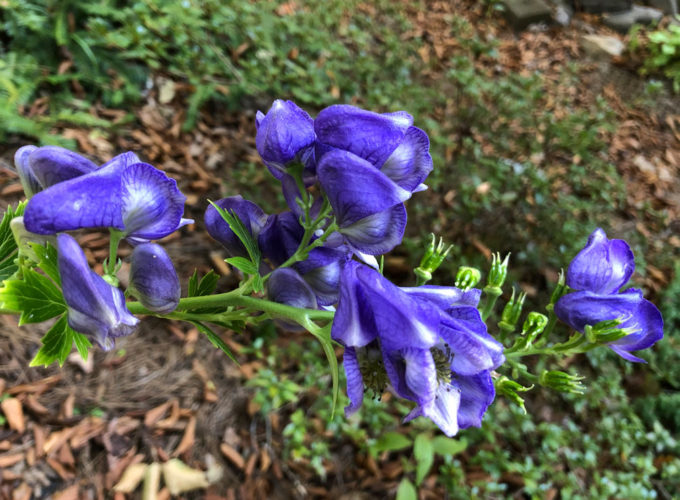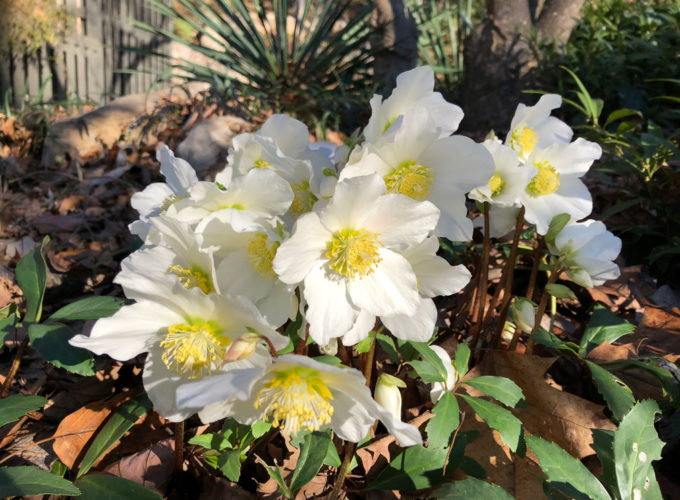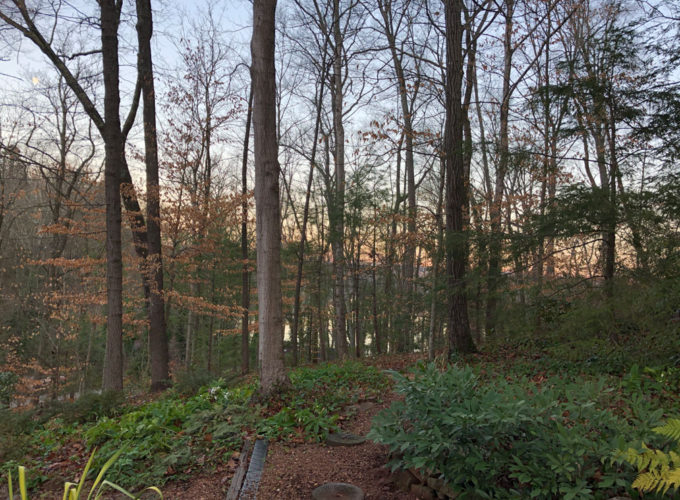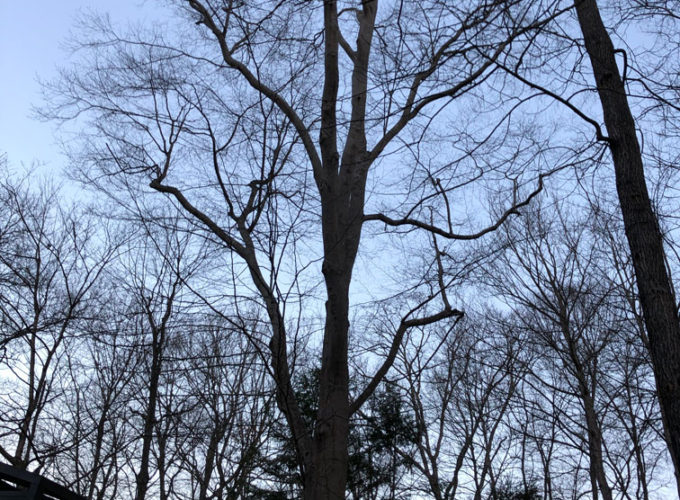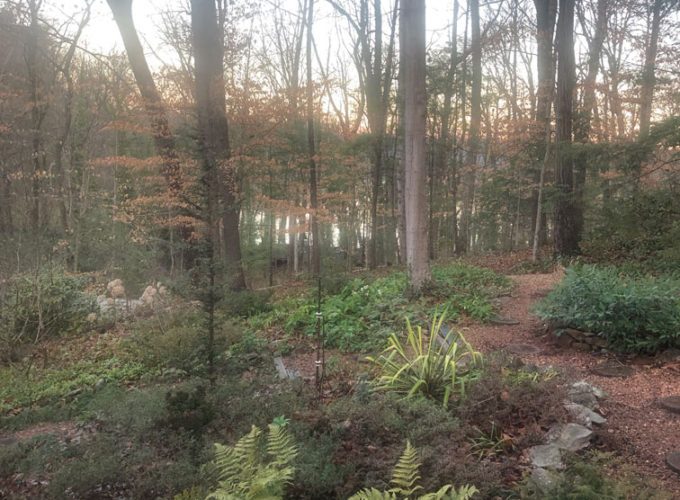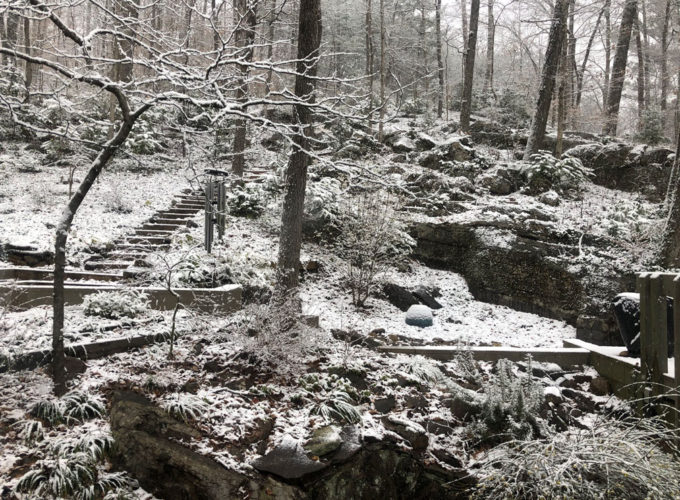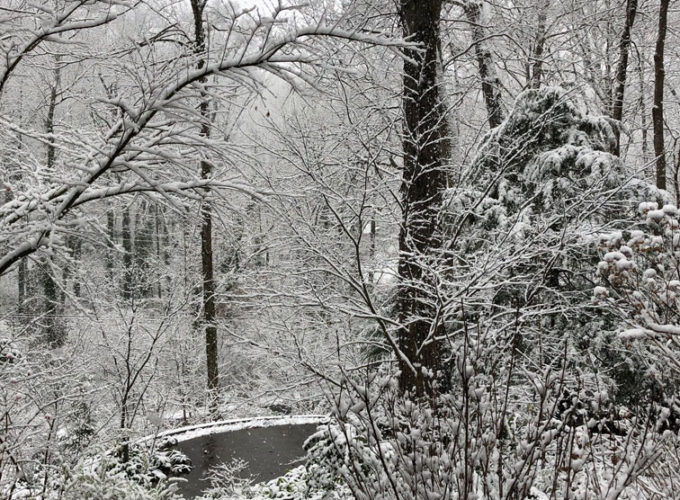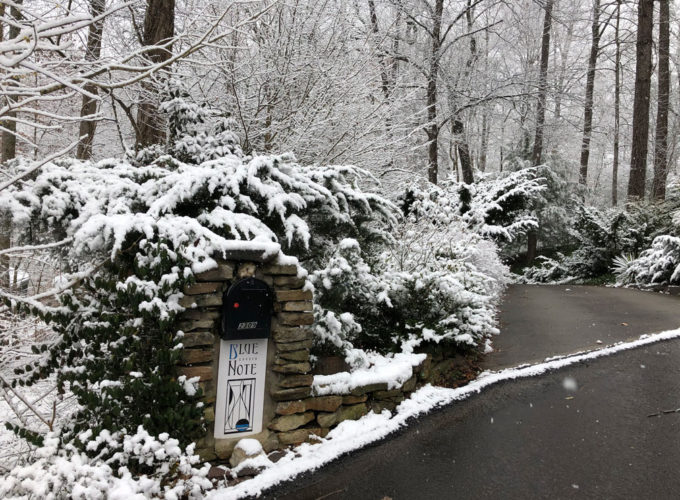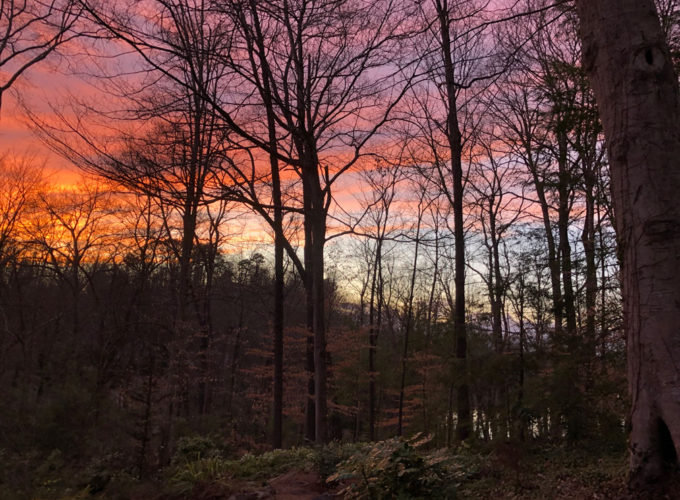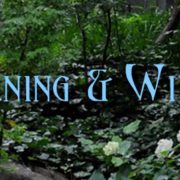The Year at Blue Note Garden – 2022 – 25 January 2023
It may, perhaps, be the influence of Blue Note Garden’s newest resident, but this annual report to family and friends is going to cut to the chase.
Although I was very concerned about a marked drop-off in the number and types of wild birds this past year, the gardens were in splendid form in Spring and early Summer of 2022—possibly their best ever. Then, three months of severe drought followed—August, September, October—resulting in many plants barely rescued from decline by hand-watering from hoses and much less or no color in the fall until nearly winter. At Christmas time, we went from a balmy 52 degrees F (11 C) one afternoon to 3 degrees F (minus 16 C) the next morning. At least half of all of our mature layered plantings, many dating back to the 1990s— especially broadleaf evergreens—may be completely gone or severely set back. I’ll be waiting to prune until we’re convinced they will or won’t come back; in some cases, that may be as late as May. Anyone with an enterprising child bound for college could likely setup a sharpening shop to pay for their tuition—everyone’s pruning tools are in for some heavy use!
One morning not long ago, there was what I call a golden sunrise with lots of yellow and orange in the early-morning, slanting winter sun. Looking out from the house’s west windows, the view was of a landscape of dead brown and black leaves almost completely set afire by the light of burnt umber. In between the masses of dark foliage, the Tennessee River shone as a peculiar, clear mirror. It was a sobering sight.
* * * * *
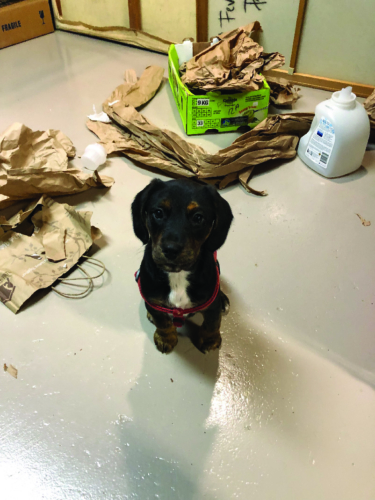 Franklin says: “You have three perfectly good zipper pulls on that jacket. Do you need me to show you how to use them?”
Franklin says: “You have three perfectly good zipper pulls on that jacket. Do you need me to show you how to use them?”
Into this bleak winter environment bounded a new puppy, brought home from friends of a sister in North Carolina on New Year’s Day 2023 at 8 weeks of age. He is equally joy and unrelenting, exhausting work. Meet Franklin—training-name “Frankie”—12 pounds at his vet appointment in early-January and now, nearing the end of January, an amazing 17 pounds and sleek as a hunting hound dog.
When he arrived, I gave him his choice of the five (!) dog beds I found stored away in our hallway attic but, of course, he chose instead Kenneth’s old Frankie and Theresa 2022-2023 1 gym bag, lurking in a corner of the utility room, as had both dog Daisy and cat Buddy before him.
Given our many years of caring for animals of all kinds, it had, stupidly, not occurred to me that more than one set of hands would be essential for managing a puppy. (A few weeks after his arrival, I now have multiple hooks and crates throughout the house.) The resident 14-year-old cat, Coco Chanel, quickly washed (“licked”) her hands (“paws”) of any involvement, although she has also been remarkably unconcerned about the situation. (I have taken extreme measures to keep each one of us three separate at feeding times.) Once or twice in the last few weeks, completely tuckered out, I have dissolved into hysterical laughter as I find myself at my kitchen table in the midst of an orchestration of puppy whimpering and high-pitched yelps coming from the kitchen dog crate, while Frankie finds his squeaky-toy under his feet in the crate and so stomps on that as well, in time. Meanwhile, Coco looks at me from her basket as though to say: “Better you than me!“ I’ve always wondered how the word “bedlam” really feels and now I know. I find it ironic that while I am dealing with my hearing failing, I can also be very much perturbed by high-pitched puppy wailing. (Not to mention that my own first 15 of 18 years would have involved a great deal of infant and child crying on the part of six siblings, none of which I can now recall.) I finally found my stash of hundreds of ear plugs from my days as a traveling musician and there are now pairs everywhere at hand.
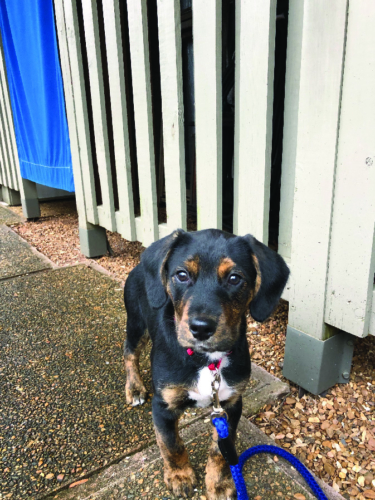 Having said all of this, Frankie is a wonder. He is a true mountain dog: Born in Hot Springs of a hound and beagle; fostered in Asheville; brought to Knoxville by car where he wailed and hollered constantly until we hit the switchback curves and hills of the highlands in Marshall, when he promptly fell asleep. Here at Blue Note Garden we have a trail called Connor’s Trail, after one of my nephews. It starts at the highest point of the property and wends its way all the way down to the lowest point. When I walk with Frankie, I stick to the trail—still a pretty precarious route—while he takes one rock after the other, sometimes jumping off one onto the next. I’ll get his DNA analyzed for fun someday, but it is easy to imagine that he might be part caribou!
Having said all of this, Frankie is a wonder. He is a true mountain dog: Born in Hot Springs of a hound and beagle; fostered in Asheville; brought to Knoxville by car where he wailed and hollered constantly until we hit the switchback curves and hills of the highlands in Marshall, when he promptly fell asleep. Here at Blue Note Garden we have a trail called Connor’s Trail, after one of my nephews. It starts at the highest point of the property and wends its way all the way down to the lowest point. When I walk with Frankie, I stick to the trail—still a pretty precarious route—while he takes one rock after the other, sometimes jumping off one onto the next. I’ll get his DNA analyzed for fun someday, but it is easy to imagine that he might be part caribou!
* * * * *
3 February 2023 Update of One Month in the Era of Franklin (1 January-1 February 2023):
The tale of Frankie and me came to a good but bittersweet end earlier this week when I returned him to his foster family, who had never stopped inquiring after him every few days. I came to realize that they wished they had never given him up, despite their already having several other pets. I also came to feel that Frankie was not happy without his big foster family of dogs, cats and people coming in and out of their home and yard. Despite all my attempts to give Frankie enough physical and mental exercise, as well as arranging for several occasions to socialize him with other dogs, I could not do enough. I have always been one of those characters who “care too much and try too hard” but it did not feel right for me to stubbornly impose that sense of a commitment on a vibrant, rambunctious baby-puppy of inexhaustible energy when his foster family was more than willing to take him back.
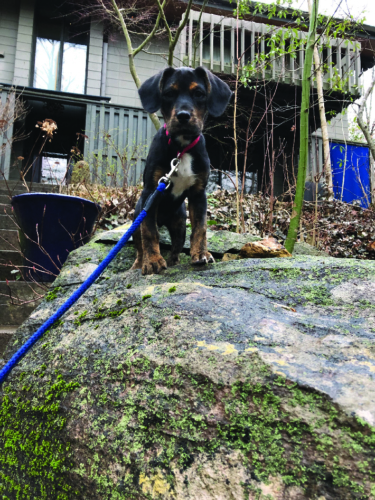 Yesterday, with Frankie gone for two days, I realized that he never made a sound outdoors, except for one occasion when he barked a single time, late into the night at a toilet break, warning of a fox who then scurried away. On our morning walks, in particular, he could go totally-Zen while he sat or stood absolutely still to take in the sights, sounds and smells in the wild rocky woodland all about him here at Blue Note Garden. He would notice and wonder about the tinkle of a wind chimes nearby. Nostrils twitching, he could feel an unusual current of warm, moist air dropping down from our high north slope and then rising up from the waterfall channel below. Exceptionally for a little puppy, he’d look intently at me to make sure I’d also noticed all these wondrous things.
Yesterday, with Frankie gone for two days, I realized that he never made a sound outdoors, except for one occasion when he barked a single time, late into the night at a toilet break, warning of a fox who then scurried away. On our morning walks, in particular, he could go totally-Zen while he sat or stood absolutely still to take in the sights, sounds and smells in the wild rocky woodland all about him here at Blue Note Garden. He would notice and wonder about the tinkle of a wind chimes nearby. Nostrils twitching, he could feel an unusual current of warm, moist air dropping down from our high north slope and then rising up from the waterfall channel below. Exceptionally for a little puppy, he’d look intently at me to make sure I’d also noticed all these wondrous things.
In particular, one morning he caught the whistle of a far-off train—on the historic Little River railroad line—and his head and ears slowly swung to follow precisely the route that I knew it routinely took. Every morning thereafter, he’d listen for it at exactly the right time; I won’t ever be able to hear that train whistle without thinking about Frankie. He noted much else: I’d say that by the time he left from here, he was able to distinguish the calls of seven or more distinct woodpeckers, not to mention many other birds passing through.
Every morning walk, he helped me move fallen limbs from storms out of the way from the nearby roads and trails. Every long afternoon excursion in parks, he helped me pick up trash that humans left behind, although he would have much preferred consuming the trash. This is not to mention the many tree nuts he rescued from squirrels and chipmunks, eagerly chomping down on them as teething toys.
It was only when he was indoors, in our quiet home of old lady and old cat, that he had a very hard time settling down.
It was a painful thing to do, but I am very glad I steeled myself to be the one to return Frankie to his family and did not ask my youngest sister to do so. Propelling himself out of the car crate, his 17 pounds immediately plunged into a running and wrestling match with the foster family’s two old dogs, well over 75 pounds each. Clearly, he was at home, where he was meant to be. His foster mother reported the next day that the dogs played hard the entire evening and then slept contentedly all night long.
However hard, giving Frankie back was the right thing to do. I look forward to hearing more about how this beloved, smart and bold puppy grows into himself in that wonderful family. Getting to know Frankie has reminded me of the little hound in Where the Red Fern Grows, a remarkable children’s book. One of two dogs in the story, the little hound gives life all he has and because of that he lives on as a memorable character. Frankie has that drive to purpose and I hope he will find it.
Only here for one month, this “mere dog” leaves a big hole in our home and my heart, joining the mounting number of other holes I am grateful to harbor. Not long ago, I ran into an essay whose author described “joy” in aging as being experienced “with a tear in the eye.” I like that reminder: The joy won’t last, so be sure not to miss it amid the inevitable pain.
Kenneth and I watched together It’s a Wonderful Life at every Christmas season of our 42 years together. I had not watched it by myself since his death five years ago until just this past Christmas of 2022. I recommend it, with my best wishes to all of you, as a fine way to start the New Year of 2023!
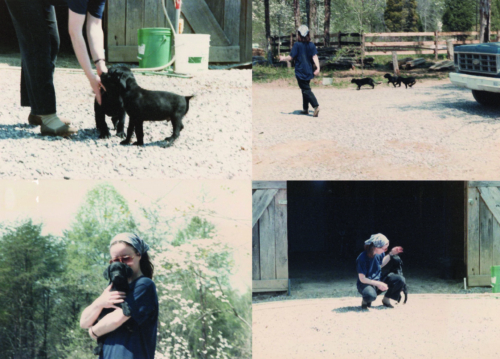
Puppies Casey and MacCoo at Lanntair Farm in 1985
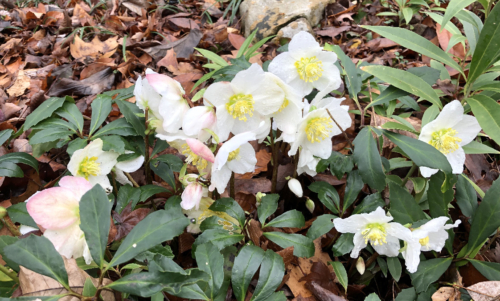 It is early morning and all is peaceful and quiet at Blue Note Garden. Well fed and content after their morning routines, Coco the old cat and Gracie the young dog are curled up in their favorite resting places. Occasionally they lift their heads to notice the birds, squirrels, and falling rain outside—remarkable after many weeks of heat and drought.
It is early morning and all is peaceful and quiet at Blue Note Garden. Well fed and content after their morning routines, Coco the old cat and Gracie the young dog are curled up in their favorite resting places. Occasionally they lift their heads to notice the birds, squirrels, and falling rain outside—remarkable after many weeks of heat and drought.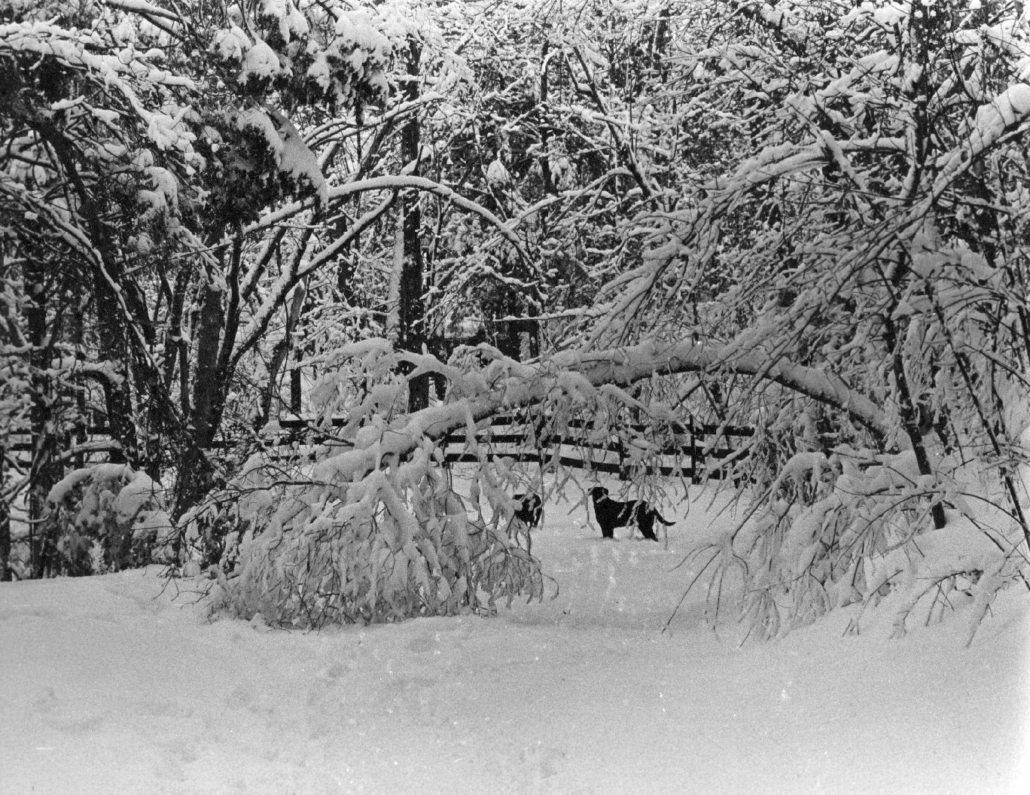


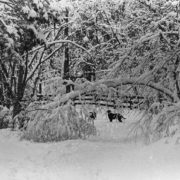
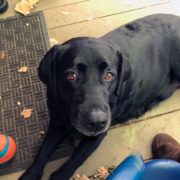
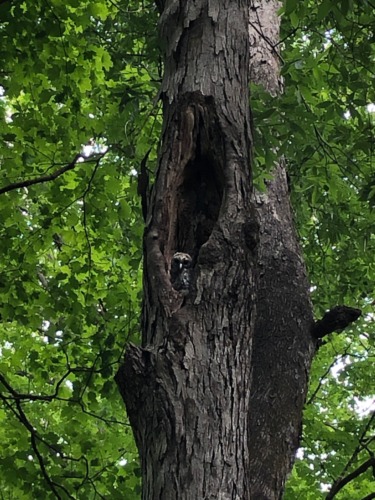 A mere one set of hands was certainly not enough. Back to the foster home he went, where he is doing splendidly; he is becoming quite the handsome and winsome lad.
A mere one set of hands was certainly not enough. Back to the foster home he went, where he is doing splendidly; he is becoming quite the handsome and winsome lad.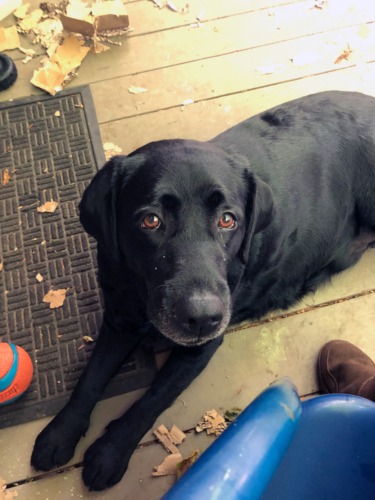 Most unusual of all, she almost never barks or makes any sound at all, although her longtime caretakers tell me to pay attention if she does. Sure enough, on her second week of trial she spots a cloud of rising vapor at a neighbor’s and barks once; I look but can see nothing amiss; it is a foggy day by the river and I think it is likely just a rising vapor cloud. It is not; it turns out to be a smoldering HVAC unit. Also on her second week, I hear her give a low soft growl but I am in a hurry so I pull her away for home. The next day, we go by that same area and see an enormous pile of shredded bark beneath a rotting tree—no dummy, Gracie likely had sensed a bear!
Most unusual of all, she almost never barks or makes any sound at all, although her longtime caretakers tell me to pay attention if she does. Sure enough, on her second week of trial she spots a cloud of rising vapor at a neighbor’s and barks once; I look but can see nothing amiss; it is a foggy day by the river and I think it is likely just a rising vapor cloud. It is not; it turns out to be a smoldering HVAC unit. Also on her second week, I hear her give a low soft growl but I am in a hurry so I pull her away for home. The next day, we go by that same area and see an enormous pile of shredded bark beneath a rotting tree—no dummy, Gracie likely had sensed a bear!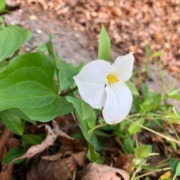
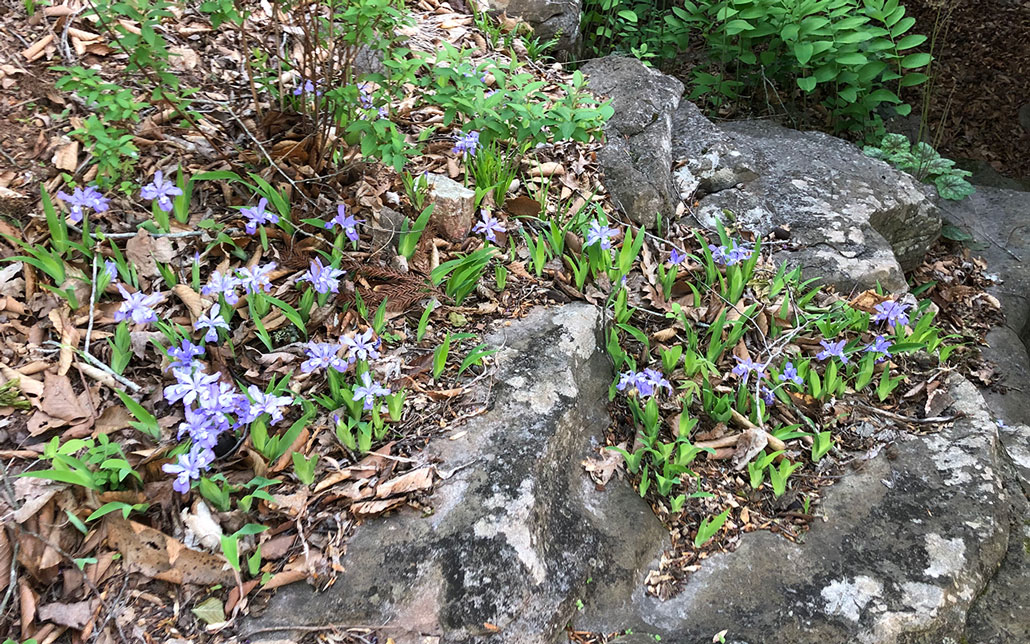
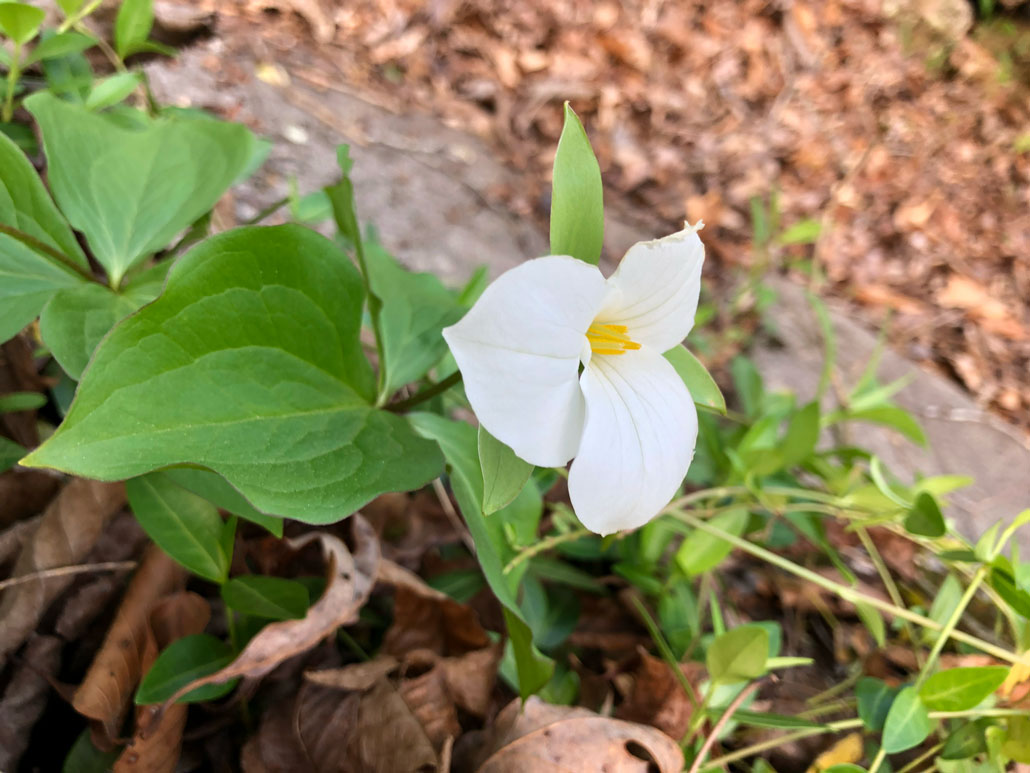
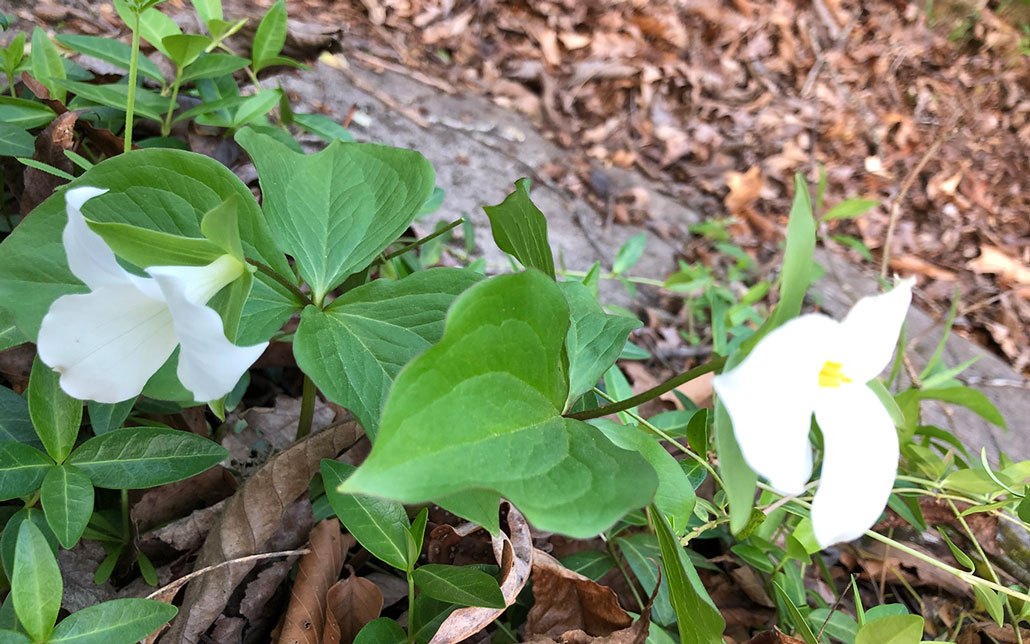
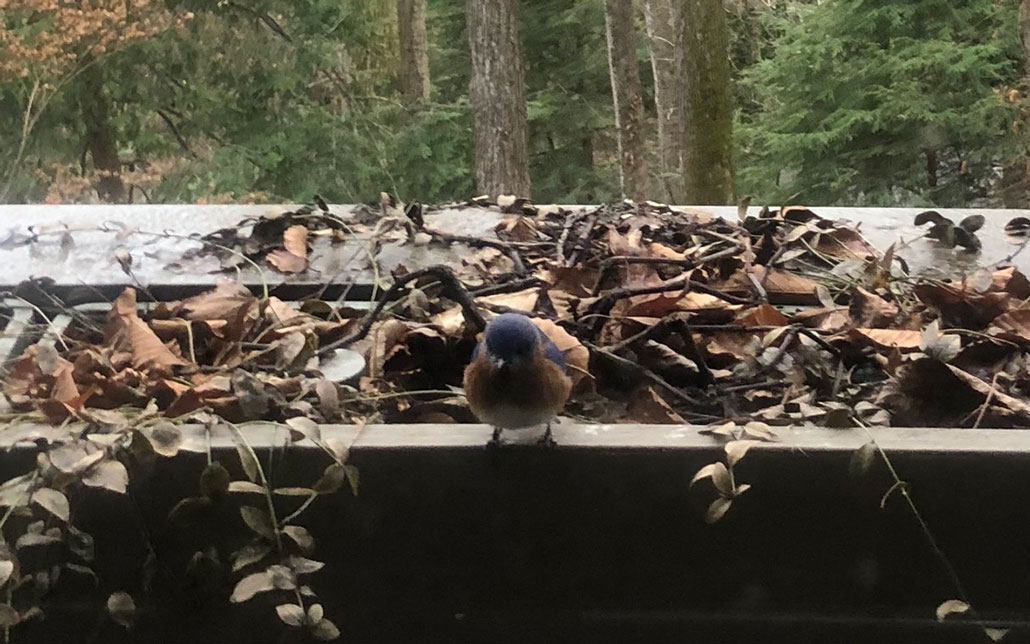

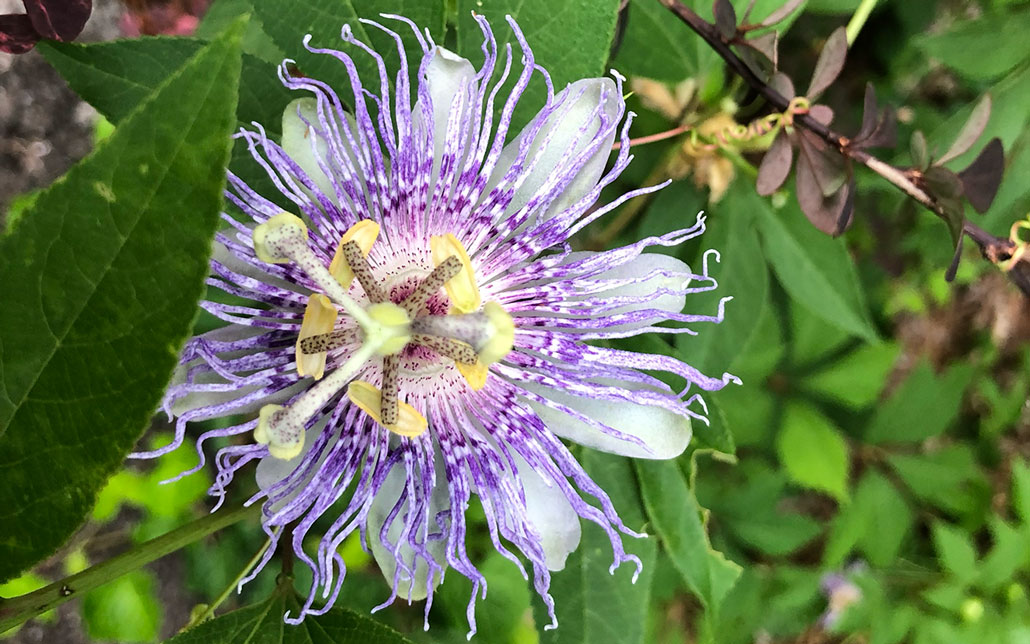
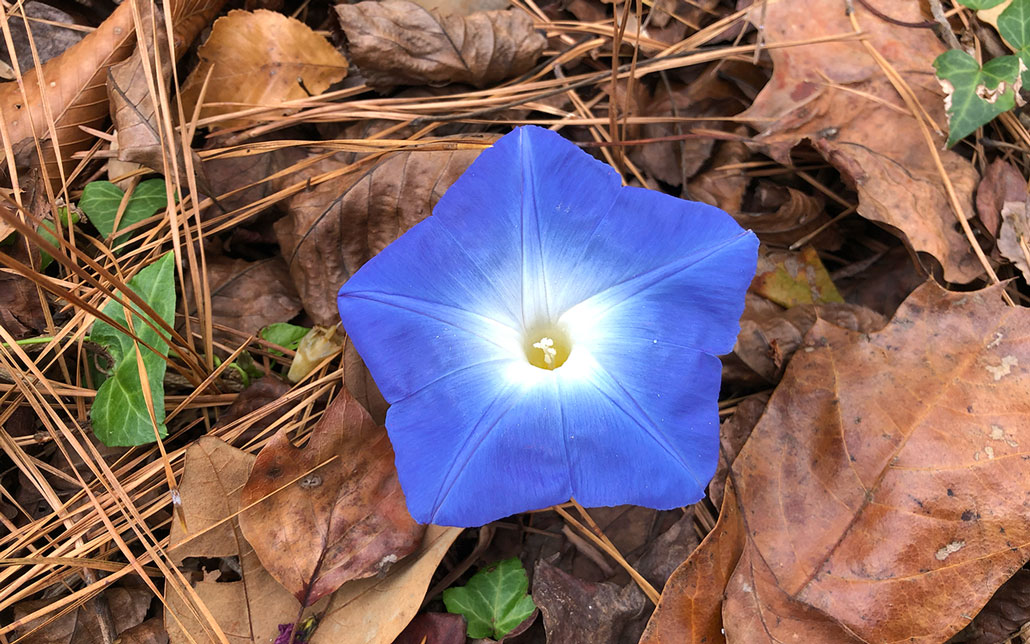
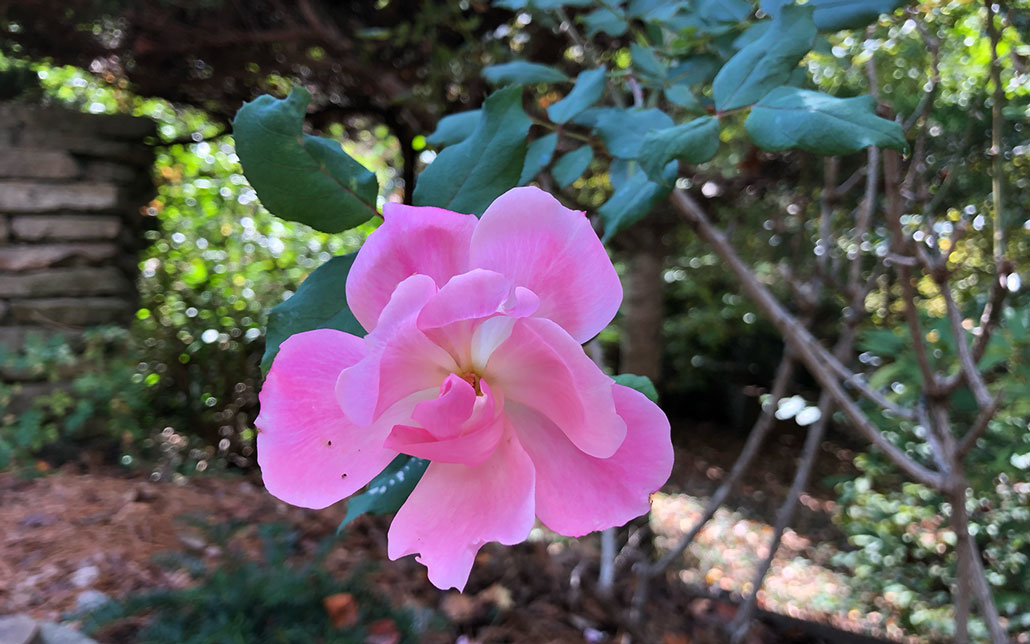
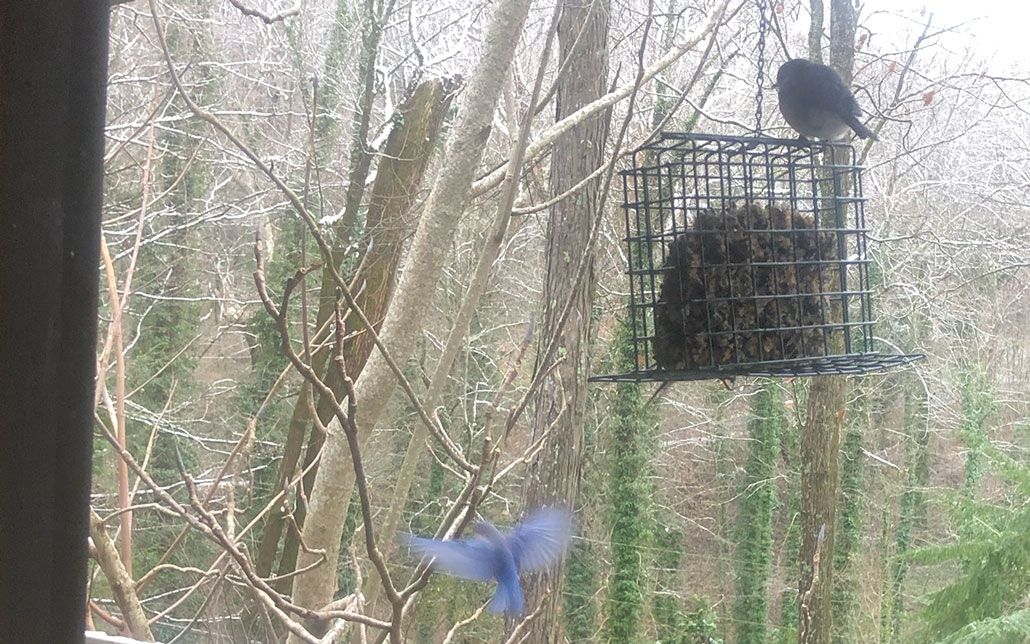

 Franklin says: “You have three perfectly good zipper pulls on that jacket. Do you need me to show you how to use them?”
Franklin says: “You have three perfectly good zipper pulls on that jacket. Do you need me to show you how to use them?” Having said all of this, Frankie is a wonder. He is a true mountain dog: Born in Hot Springs of a hound and beagle; fostered in Asheville; brought to Knoxville by car where he wailed and hollered constantly until we hit the switchback curves and hills of the highlands in Marshall, when he promptly fell asleep. Here at Blue Note Garden we have a trail called Connor’s Trail, after one of my nephews. It starts at the highest point of the property and wends its way all the way down to the lowest point. When I walk with Frankie, I stick to the trail—still a pretty precarious route—while he takes one rock after the other, sometimes jumping off one onto the next. I’ll get his DNA analyzed for fun someday, but it is easy to imagine that he might be part caribou!
Having said all of this, Frankie is a wonder. He is a true mountain dog: Born in Hot Springs of a hound and beagle; fostered in Asheville; brought to Knoxville by car where he wailed and hollered constantly until we hit the switchback curves and hills of the highlands in Marshall, when he promptly fell asleep. Here at Blue Note Garden we have a trail called Connor’s Trail, after one of my nephews. It starts at the highest point of the property and wends its way all the way down to the lowest point. When I walk with Frankie, I stick to the trail—still a pretty precarious route—while he takes one rock after the other, sometimes jumping off one onto the next. I’ll get his DNA analyzed for fun someday, but it is easy to imagine that he might be part caribou! Yesterday, with Frankie gone for two days, I realized that he never made a sound outdoors, except for one occasion when he barked a single time, late into the night at a toilet break, warning of a fox who then scurried away. On our morning walks, in particular, he could go totally-Zen while he sat or stood absolutely still to take in the sights, sounds and smells in the wild rocky woodland all about him here at Blue Note Garden. He would notice and wonder about the tinkle of a wind chimes nearby. Nostrils twitching, he could feel an unusual current of warm, moist air dropping down from our high north slope and then rising up from the waterfall channel below. Exceptionally for a little puppy, he’d look intently at me to make sure I’d also noticed all these wondrous things.
Yesterday, with Frankie gone for two days, I realized that he never made a sound outdoors, except for one occasion when he barked a single time, late into the night at a toilet break, warning of a fox who then scurried away. On our morning walks, in particular, he could go totally-Zen while he sat or stood absolutely still to take in the sights, sounds and smells in the wild rocky woodland all about him here at Blue Note Garden. He would notice and wonder about the tinkle of a wind chimes nearby. Nostrils twitching, he could feel an unusual current of warm, moist air dropping down from our high north slope and then rising up from the waterfall channel below. Exceptionally for a little puppy, he’d look intently at me to make sure I’d also noticed all these wondrous things.
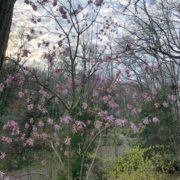
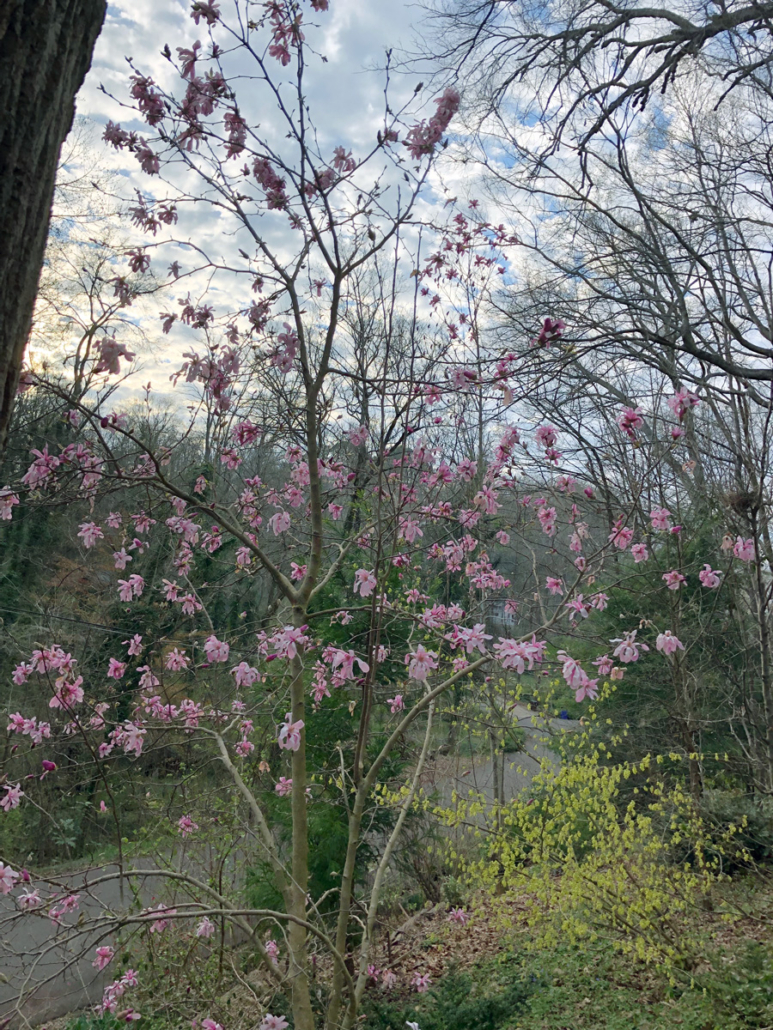
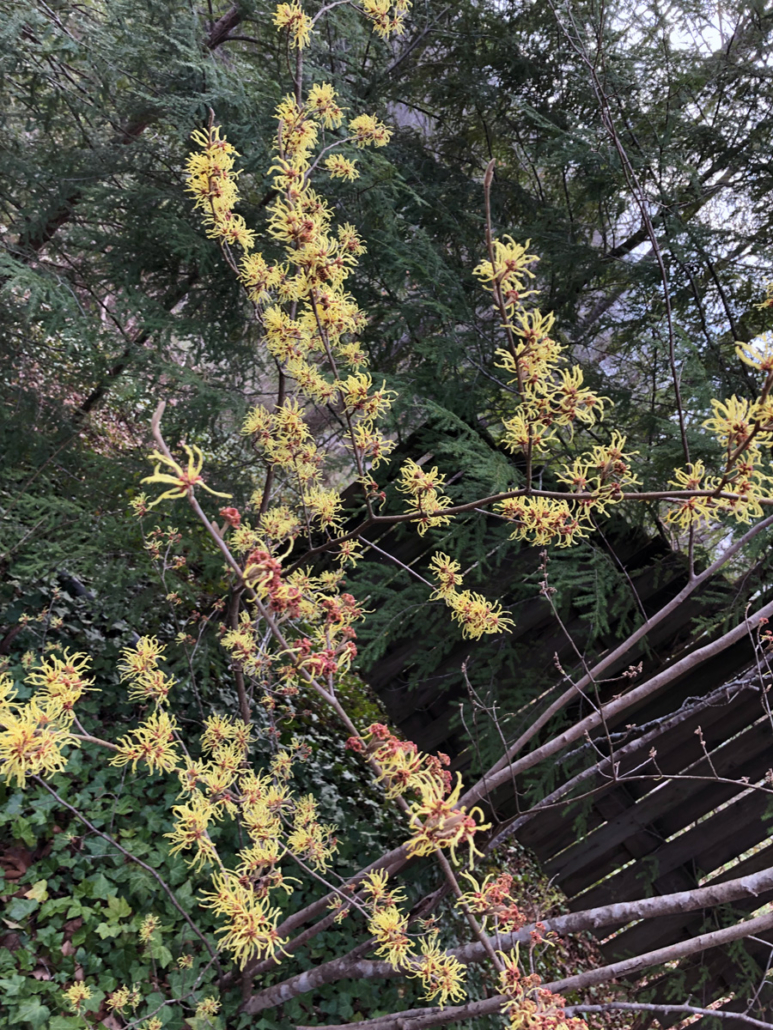
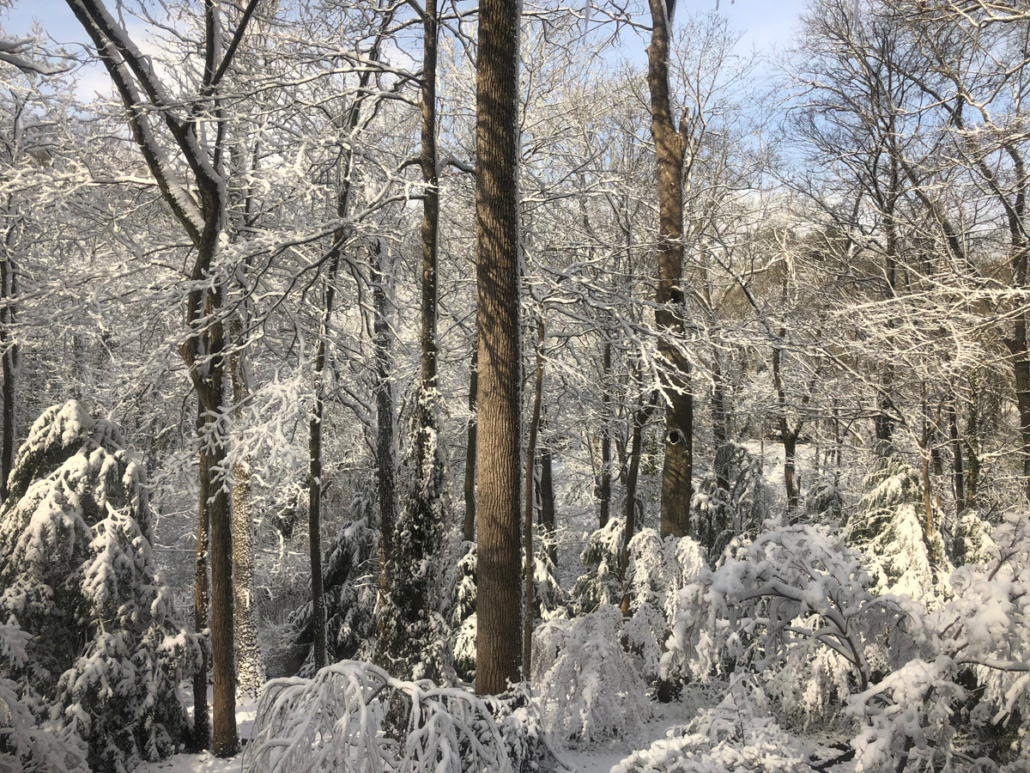
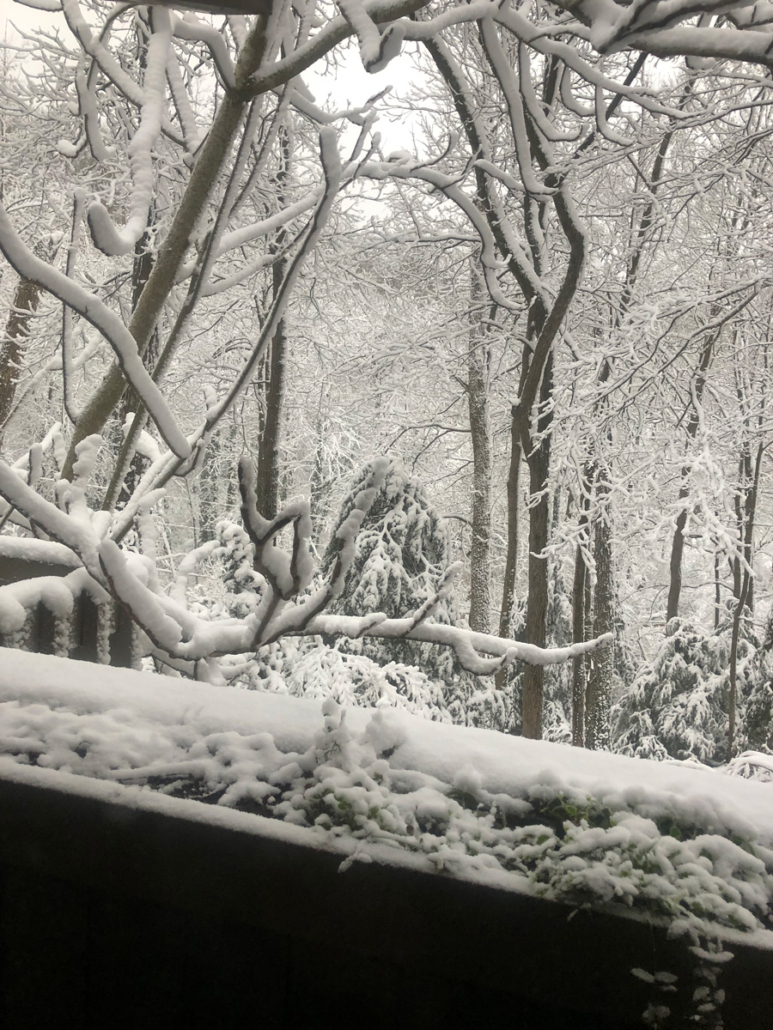
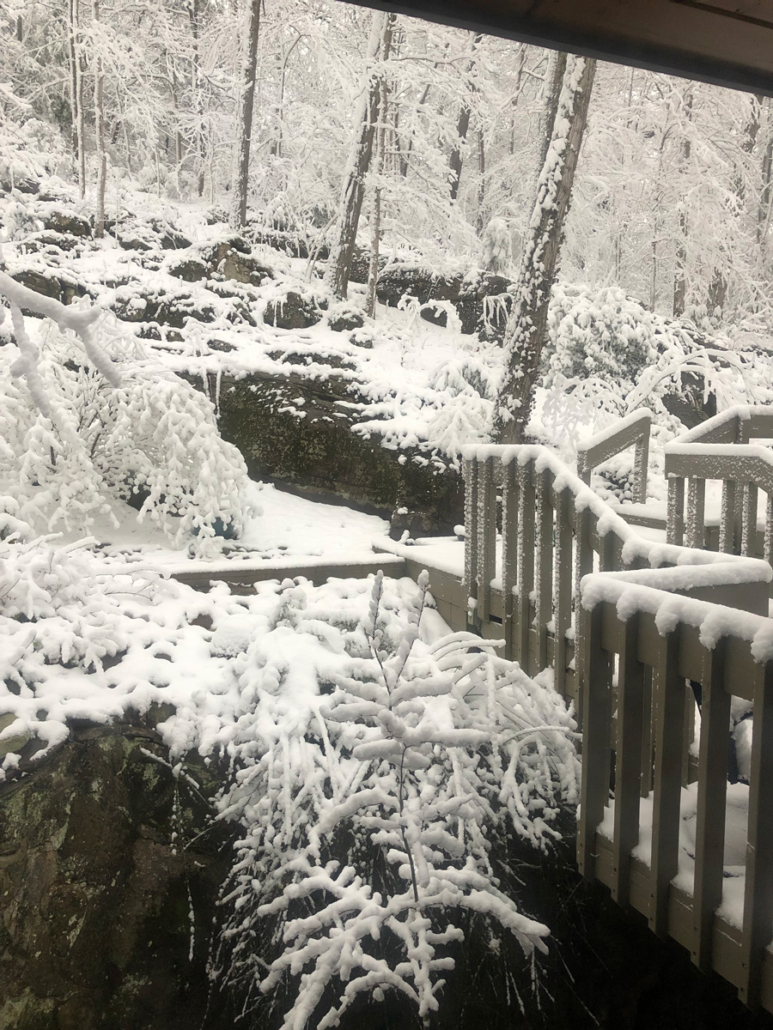
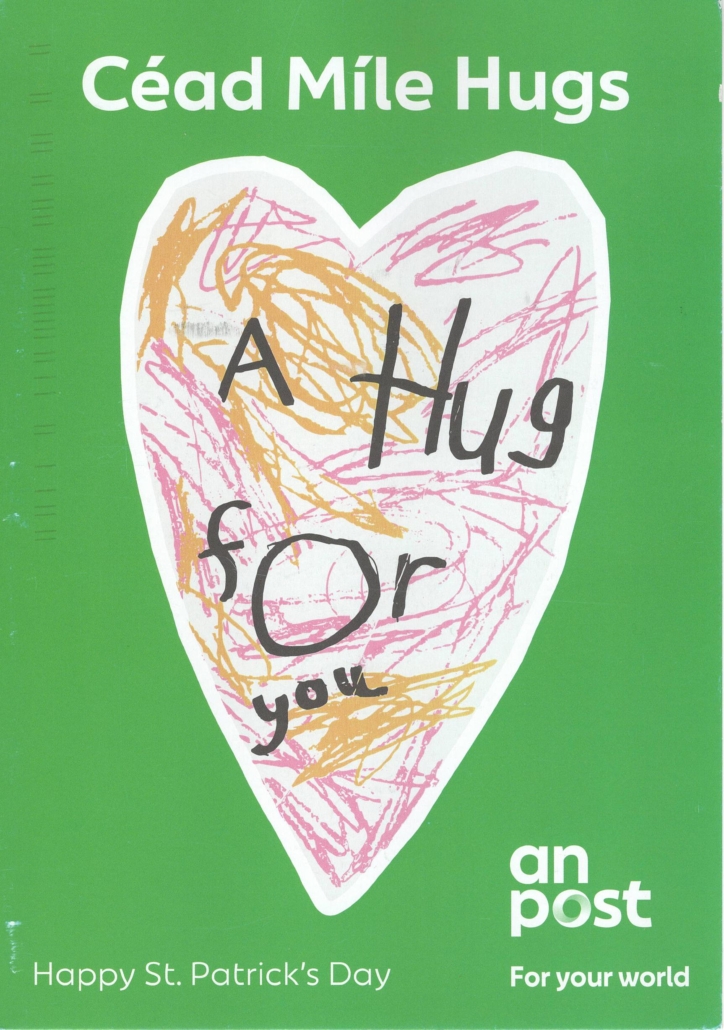
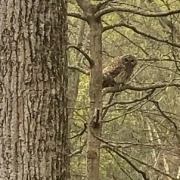
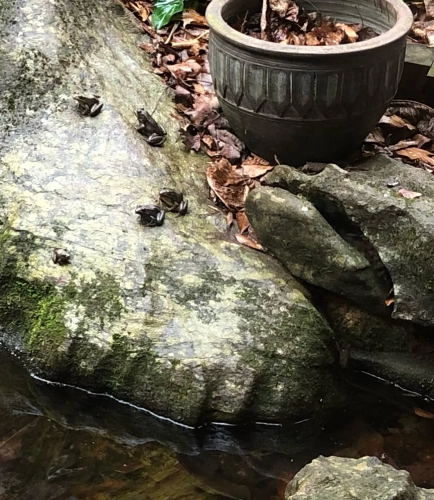 Sights and Sounds
Sights and Sounds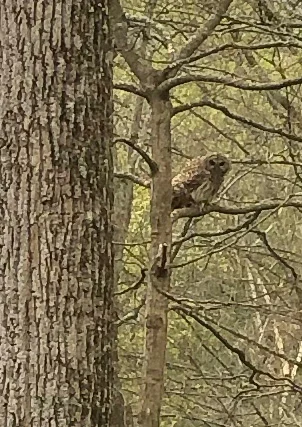 Over this past weekend there seemed to be a lot of chatter from parents to owlets and whining in response from owlets to parents—it would appear that the parents are anxious for schooling in flying and hunting to commence in earnest and 24/7 meal deliveries to begin to decline. Yesterday I finally got to actually see one owlet, rather than just hear him, when he made the momentous climb from deep within the nest cavity to the open threshold of its high entrance. There he mostly preened and fluttered his wings from time to time, taking in the sights. The training wheels really went on this afternoon when he hopped-off and glided from his 30-foot high perch to another small branch in a young but tall maple close by.
Over this past weekend there seemed to be a lot of chatter from parents to owlets and whining in response from owlets to parents—it would appear that the parents are anxious for schooling in flying and hunting to commence in earnest and 24/7 meal deliveries to begin to decline. Yesterday I finally got to actually see one owlet, rather than just hear him, when he made the momentous climb from deep within the nest cavity to the open threshold of its high entrance. There he mostly preened and fluttered his wings from time to time, taking in the sights. The training wheels really went on this afternoon when he hopped-off and glided from his 30-foot high perch to another small branch in a young but tall maple close by.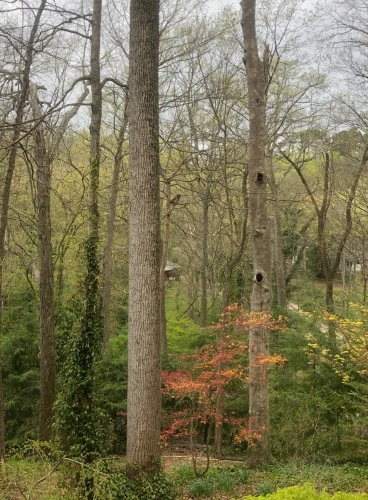
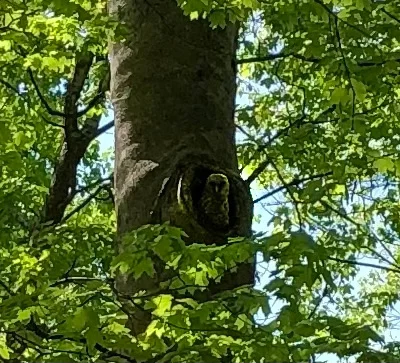 I am often care-worn in my mind about the Earth we are leaving to future generations. As I observe moments in nature here at Blue Note Garden, my fervent hope that a new generation of barred owls will successfully launch into our wild and worrisome world seems a very small concern in the bigger picture of impending catastrophe. This afternoon, as I observed both parent owls closely supervising their offspring and fuzzy owlets playfully taking the plunge into their new lives, I realized that they know what they are doing even if most humans do not. I will miss them but they do not need me to worry about them. My heart fills and I whisper to myself that getting to see them do what they do naturally—“This
I am often care-worn in my mind about the Earth we are leaving to future generations. As I observe moments in nature here at Blue Note Garden, my fervent hope that a new generation of barred owls will successfully launch into our wild and worrisome world seems a very small concern in the bigger picture of impending catastrophe. This afternoon, as I observed both parent owls closely supervising their offspring and fuzzy owlets playfully taking the plunge into their new lives, I realized that they know what they are doing even if most humans do not. I will miss them but they do not need me to worry about them. My heart fills and I whisper to myself that getting to see them do what they do naturally—“This 